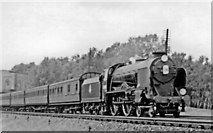EM2
Established Member
Way back in the mists of time, I started my career as a trainee S&T technician, based at Chislehurst Junction signal box.
Just opposite the box was a large brick structure, which I know was connected somehow with the electrical system, bit I have forgotten exactly how. We even visited it once, but what the machinery within was for, I have completely forgotten!
On this Google Maps screen, the signal box was on the large grey patch on the left, the structure I'm interested in is the centre, between the two main lines.
https://goo.gl/maps/Amob6ECdxk32
Just opposite the box was a large brick structure, which I know was connected somehow with the electrical system, bit I have forgotten exactly how. We even visited it once, but what the machinery within was for, I have completely forgotten!
On this Google Maps screen, the signal box was on the large grey patch on the left, the structure I'm interested in is the centre, between the two main lines.
https://goo.gl/maps/Amob6ECdxk32


